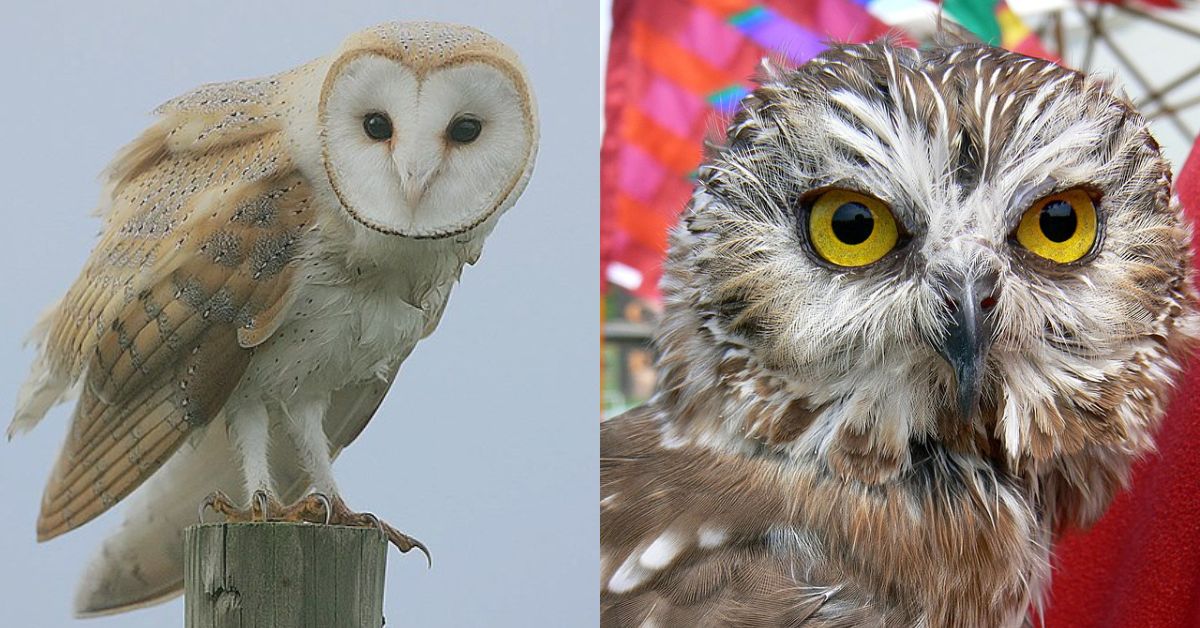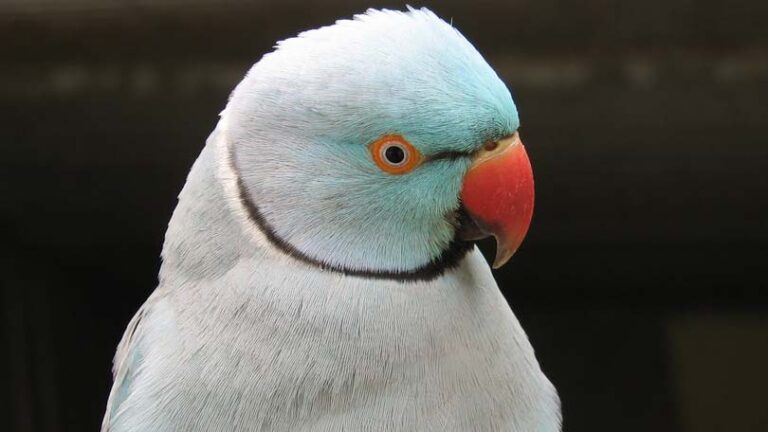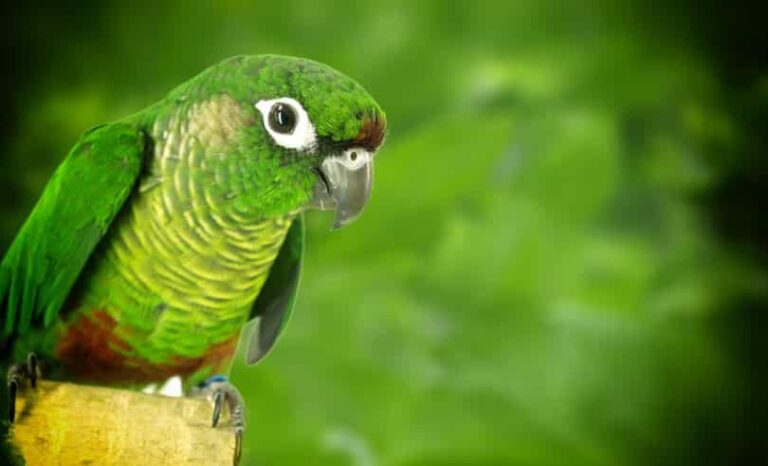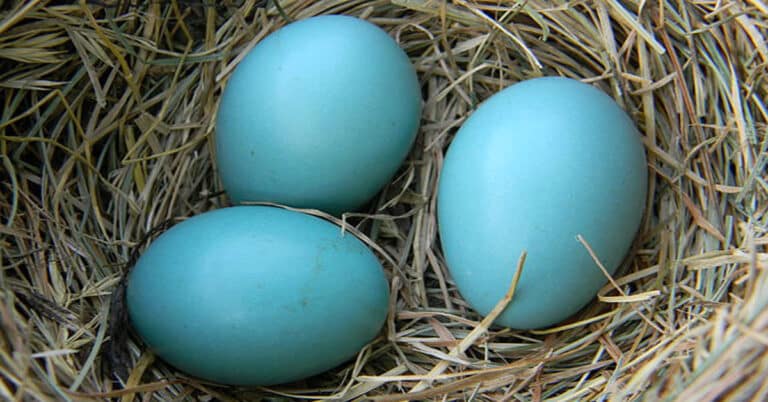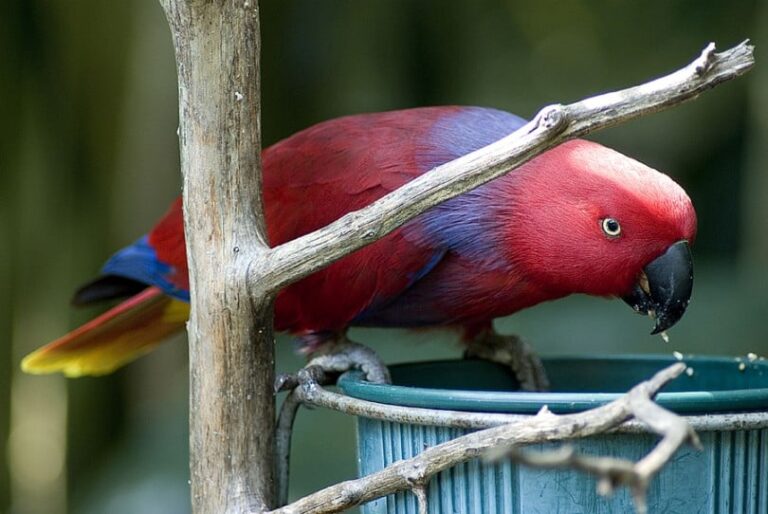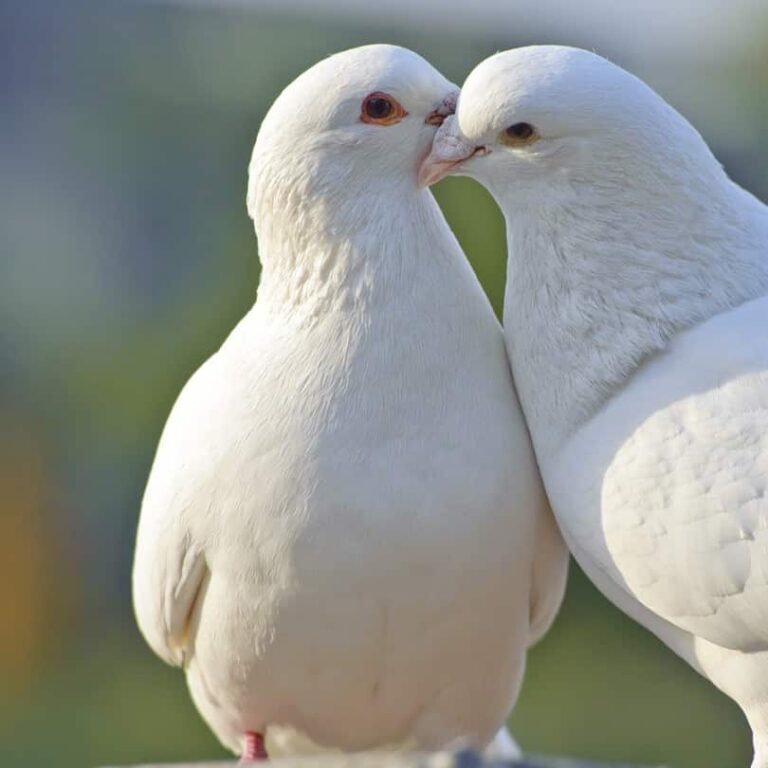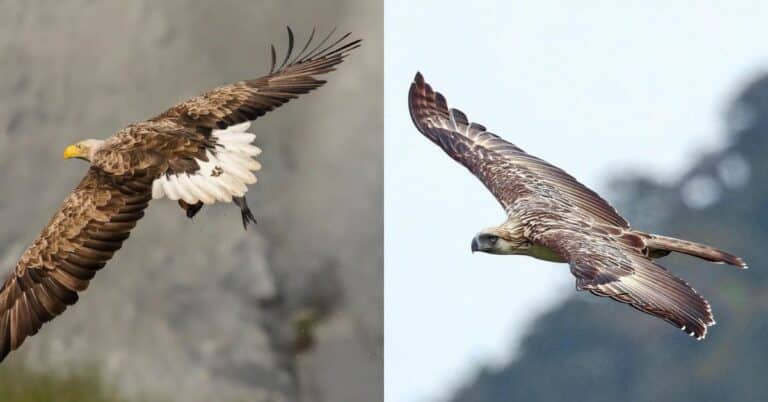Owls in Florida: 10 Species You Can Observe in the Wild
Florida offers a fantastic opportunity to witness its rich biodiversity, particularly through the fascinating world of owls! From the majestic Eastern Screech owl to the incredible Snowy owl, these nocturnal birds provide a captivating experience for enthusiasts and learners alike.
If you are curious, have a research purpose, or are simply inspired by Harry Potter’s owl Hedwig and wish to interact closely with these intelligent creatures, Florida is the ideal destination!
Let’s take a closer look at this comprehensive guide to explore and learn about the 10 distinct species of owls that call Florida home.
What Makes Owls in Florida So Special?
Owls in Florida have some unique characteristics that set them apart from other birds. One notable feature is their specialized bone and body structure. Their eyes, which are fixed in position, can collect 10 times more light than human eyes, and this biological structure of the body led to the development of a distinctive neck bone structure that allows owls to turn their heads to spot prey. Another distinctive feature of owls in Florida is their unique way of developing vocalization.
Considering they are predatory birds with no natural predators, owls in Florida typically survive for 8 to 10 years. However, in captivity, they can live much longer. Fortunately, it’s only legal to possess an owl if it has been injured, so not many owls in Florida are found in captivity.
10 Species of owls in Florida
While spotting owls in Florida can be quite challenging, given their predominantly nocturnal and elusive nature, your enthusiasm and commitment may lead to the thrilling experience of encountering 10 exceptionally unique owls in Florida!
1. Snowy Owl
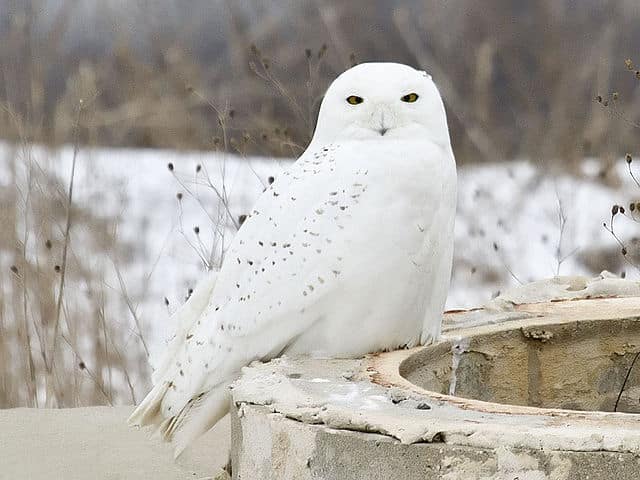
Snowy owl is probably the most famous owl in the world. Do you remember that snowy owl Hedwig is the lifetime companion of the famous Harry Potter? You may also be lucky enough to see this species from time to time during the winter in Florida.
They’re quite large and easily recognizable due to their thick white feathers and black stripes on their backs and wings. Standing at around 20 to 28 inches in height with a wingspan of 4.5 to 5 feet, these snowy owls are an impressive sight indeed.
They mainly hunt lemmings and other small rodents. They’re not shy about perching in open areas such as beaches, marshes, and fields, where they keep a keen eye out for their next meal. In contrast to other owls in Florida, it’s quite rare to spot a snowy owl staying in one place for an extended period of time.
Unfortunately, their populations tend to go up and down, especially when there’s a shortage of food in their breeding grounds.
2. Eastern Screech Owl
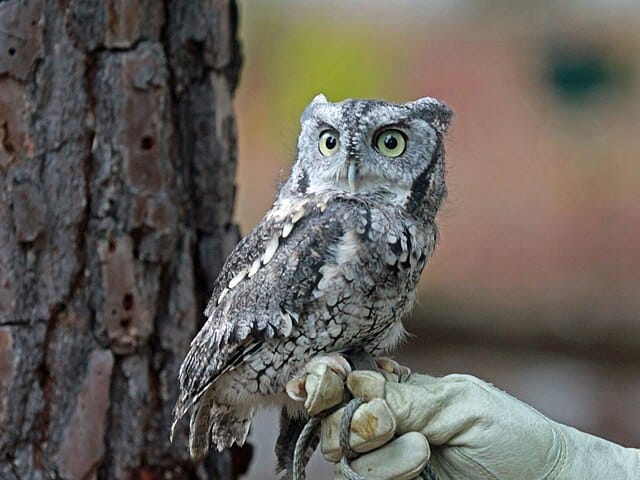
Our owl adventure continues with a native Eastern Screech owl. These owls are relatively small, measuring around 8-10 inches in height and boasting a wingspan of 18-24 inches. Their feather patterns, which can be gray, brown, or reddish, allow them to practically disappear against tree bark.
Eastern Screech owls are mainly active at night, making them nocturnal hunters. However, you might spot them during dusk or dawn. They tend to favor wooded areas, like forests, swamps, parks, and even suburban backyards.
When it comes to nesting, these owls use natural tree cavities or abandoned woodpecker holes. What sets Eastern Screech owls apart is that they’re not migratory – they stick to their breeding territories year-round. With a lifespan of around 8 years, Eastern Screech owls are indeed valuable inhabitants, helping to keep pest and rodent populations in check.
3. Great Horned Owl
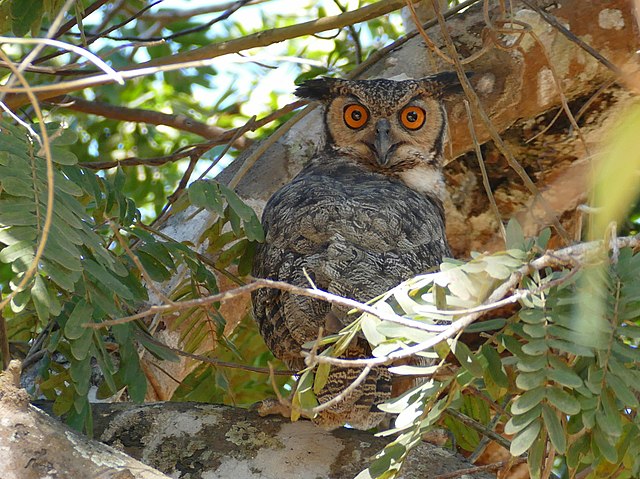
The Great Horned Owl is a pretty common sight in Florida. They’re unique with those big tufts on their heads, reddish-brown or gray feathers, and a white patch on their throat. What makes them unique is their size – they have a wingspan ranging from 3 to 5 feet.
You’ll find them in forests, swamps, parks, and even suburban areas. They’re not picky eaters either – they’ll go for rabbits, squirrels, mice, birds, reptiles, insects, and even skunks.
Great Horned owls are smart about nesting. They’ll use tree cavities, nest boxes, or even nests abandoned by other birds like hawks, crows, or squirrels.
Great Horned owls are pretty savvy predators with excellent vision in low light and great hearing. They can hunt day or night. You’ll recognize them by their loud hooting sounds, especially during breeding season in late fall through winter. Despite being top predators, they still have their share of challenges, like bald eagles, coyotes, foxes, and raccoons. In the wild, Great Horned owls can live up to 13 years.
4. Barred Owl
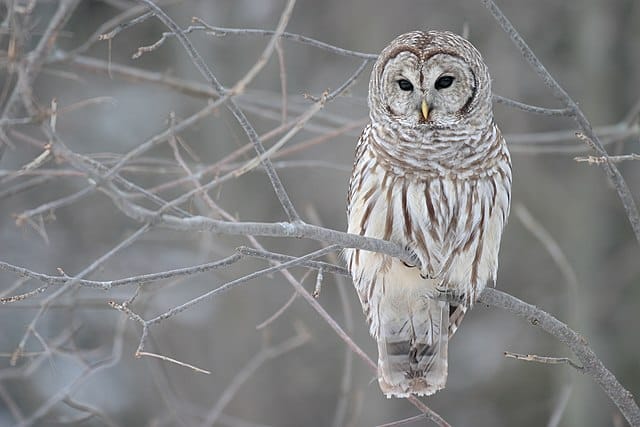
The Barred owl, known for its distinctive hoots, is a common mid-sized bird found in the woodlands of Florida. These birds have round heads, small ear tufts, and dark eyes. Their feathers are typically brown or grayish, with white and brown bars running vertically on the chest and horizontally on the belly, which is how they got their name. Barred owls usually have a wingspan ranging from 38 to 49 inches and stand around 16 to 25 inches tall.
You can often spot Barred owls in swamps, wooded river floodplains, pine forests, and mixed woodlands all across Florida. While they are mainly active at night, they might also hunt during the twilight hours of dusk or dawn. In the wild, Barred owls can live for up to 10 years.
5. Barn Owl
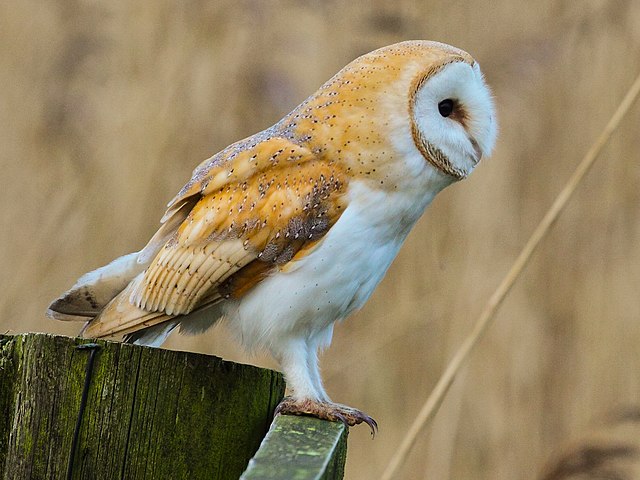
The Barn owl is a medium-sized raptor commonly found in Florida. It’s easily recognizable by its heart-shaped, ashen white face and dark eyes. These birds have a distinctive appearance, with buff-colored bodies above and pale undersides adorned with gold speckles. Their long legs and wings give them a wingspan of approximately 3 feet. With an average lifespan of 4-5 years, Barn owls play a vital role in regulating agricultural pests.
Barn owls prefer open habitats such as grasslands, marshes, and agricultural areas. They tend to roost and build their nests in barns, abandoned buildings, silos, cavities, and nest boxes. These birds primarily feed on small rodents, relying on their keen hearing in low light or complete darkness to capture their prey.
6. Burrowing Owl
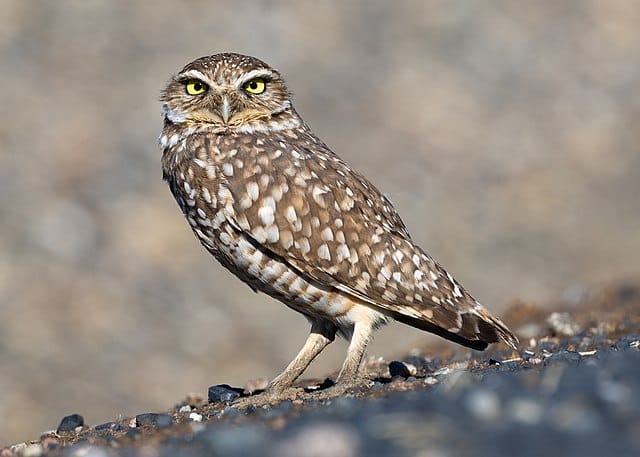
Florida is home to a tiny owl species known as the Burrowing owl. These little birds stand at just 7-10 inches in height and have compact, round bodies, long legs, and stubby tails. They don’t have ear tufts and are characterized by white chin and eyebrow stripes. Their brown spotted feathers help them blend into the dry, open landscapes they inhabit.
As the name suggests, Burrowing owls make their nests underground, utilizing burrows created by other animals such as prairie dogs, foxes, and tortoises. In Florida, you can often find them near human habitats like homes, airports, golf courses, and parks where the grass is kept short.
In contrast to other owls in Florida, these owls are most active during the day, searching for insects, small mammals, reptiles, and amphibians at dawn or dusk. Unfortunately, their populations are facing challenges due to habitat loss.
7. Short-Eared Owl
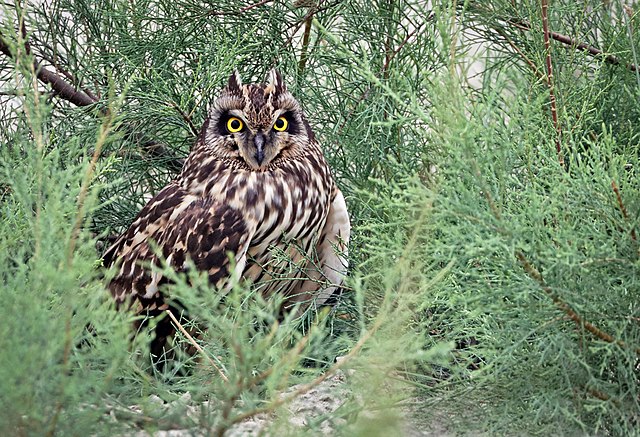
Found across open country like grasslands, marshes, and agricultural fields in Florida, the Short-eared owl has long legs and small, barely visible ear tufts. Their wingspan is 36-42 inches across, and they are 13-17 inches tall.
Some Short-eared owls in Florida overwinter in places where rodent populations remain stable. Due to habitat loss, Short-eared owls are rare in many areas, despite their wide distribution.
8. Northern Saw-Whet Owl
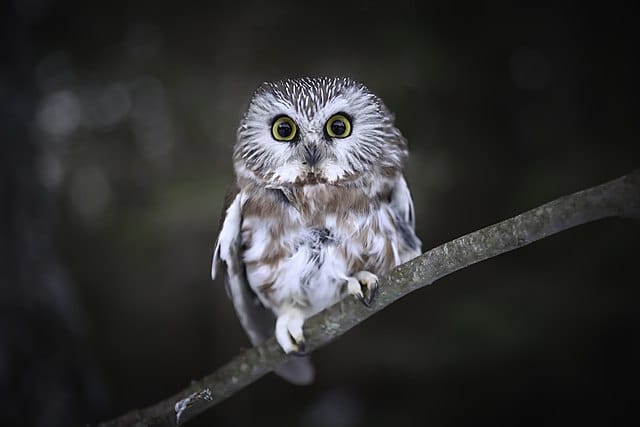
The tiny Northern Saw-whet owl is a rare winter guest in Florida. Weighing just 2-5 ounces and measuring 6-8 inches long, they’re one of the smallest owls in North America. Northern Saw-whet owls have large heads, long tails, and a blend of brown, black, and white feathers. They make their nests in tree cavities in northern forests and prey on mice, voles, shrews, bats, and small birds. They are incredibly loyal to their nest sites and may return to the same cavity for life.
Spotting a Northern Saw-whet owl in the shadows is a special delight for bird enthusiasts in Florida. While their populations seem stable, conserving their habitat is crucial to supporting these migratory birds.
9. Great Gray Owl
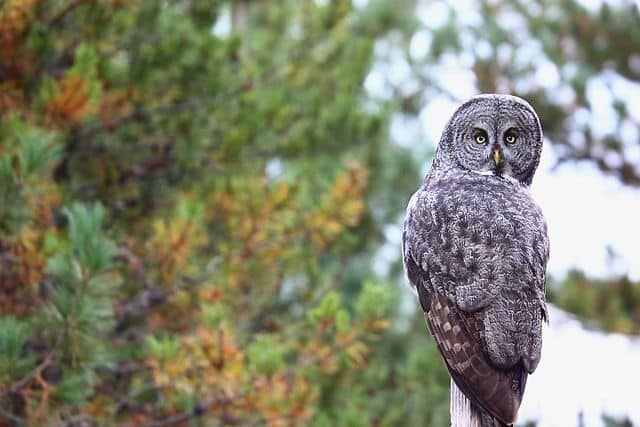
The Great Gray owl, the largest owl native to North America, stands at an impressive 28 to 33 inches in height and boasts a remarkable 5-foot wingspan. This magnificent bird is rarely spotted in northern Florida during the winter months.
One distinctive feature of the Great Gray owl is its large, round head, adorned with intense yellow eyes and distinctive gray and brown facial rings. Their long wings enable them to fly almost silently, much like a moth.
In contrast to other owls in Florida, in search of ample food sources, Great Gray owls occasionally migrate irregularly to the forests and swamps of Florida. Here, they become skilled hunters, preying on mice, voles, squirrels, and rabbits from their perches during the dawn and dusk hours.
10. Ferruginous Pygmy Owl
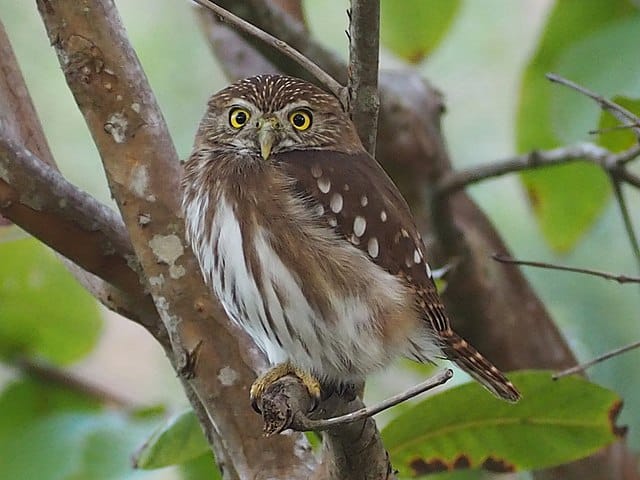
The tiny Ferruginous Pygmy owl is a resident species that can be found in the forests, woodlands, and scrubby areas of Southern Florida. These little birds sport grayish feathers, long legs, and some white spots on their backs. Despite their small size, measuring only 6 to 7.5 inches in length, they have a wingspan of around 20 inches.
These owls are quite active during the daylight hours. They perch quietly, keeping a watchful eye out for a variety of prey, including lizards, frogs, snakes, insects, birds, and even small mammals.
These Ferruginous Pygmy owls are not migratory. They stick to the same home throughout the year and don’t venture too far from it. Despite their small size, their calls are surprisingly loud and repetitive.
Final Thoughts On Owls In Florida
Owls in Florida play a crucial role in the ecosystem by actively consuming a significant number of rodent pests. Their remarkable ability to control these pests makes them highly valuable, both economically and environmentally.
Don’t forget that the decline of owls in Florida is primarily attributed to the use of pesticides and the loss of their natural habitats. To support these invaluable birds, one effective approach is to use owl boxes in the backyard. These boxes encourage owls to help manage rodent populations. And most importantly, they provide essential nesting sites for these remarkable creatures.

Nato is a content writer and researcher with a background in psychology who’s eager to explore the wonders of nature. As a travel enthusiast and animal lover, she hopes to inspire others to discover and cherish the beauty and importance of the natural world.

